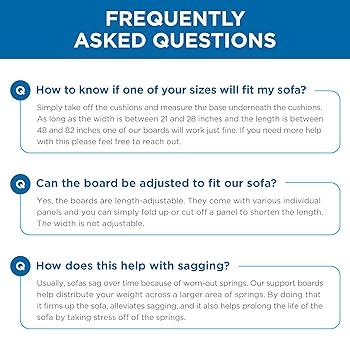A powerful 8.8-magnitude earthquake struck Russia’s Far East on Thursday, triggering tsunami warnings across Japan and the U.S. West Coast. Authorities in these regions swiftly alerted residents and coastal communities to the potential threat as emergency response teams monitored the situation closely. The seismic event, one of the strongest recorded in the area in recent years, has raised concerns over possible damage and aftershocks, prompting heightened vigilance from officials and the public alike.
Magnitude 88 Earthquake in Russia’s Far East Triggers Tsunami Alerts Across Pacific
A powerful earthquake registering 8.8 on the Richter scale struck Russia’s Far East early Tuesday, sending shockwaves across the Pacific and prompting tsunami alerts across several countries. The seismic event originated near the Kamchatka Peninsula, an area known for its tectonic volatility. Authorities in Japan and along the U.S. West Coast, including Oregon, swiftly issued warnings, urging coastal residents to stay vigilant and prepare for possible tsunami waves. Initial reports indicate strong ground shaking but no immediate casualties or significant structural damage have been confirmed.
Emergency response teams remain on high alert as they monitor oceanic wave activity and aftershocks. Below is a summary of tsunami alerts and government responses:
- Japan: Nationwide tsunami advisory in effect, coastal evacuations underway
- United States: Tsunami warning from California to Alaska, Oregon counties activating emergency protocols
- Russia: Immediate restrictions on coastal access near the epicenter zone
| Region | Alert Level | Response Status |
|---|---|---|
| Kamchatka Peninsula | Severe | Evacuation in progress |
| Japan Coastline | High | Tsunami advisory issued |
| Oregon Coast | Moderate | Emergency alert activated |
| Alaska | High | Preparedness drills ongoing |
Detailed Assessment of Potential Impact on Japan and the US West Coast
The recent seismic event registering a magnitude of 8.8 in Russia’s Far East has prompted immediate tsunami warnings, especially targeting coastal regions of Japan and the US West Coast. Japan’s eastern shores, particularly around Hokkaido and northern Honshu, have activated emergency protocols as local authorities monitor wave activity closely. Though initial assessments indicate the tsunami waves may be below critical threat levels, the population is advised to stay vigilant due to the unpredictable nature of aftershocks and secondary wave spikes. Coastal evacuation zones remain on alert, with officials emphasizing rapid response capabilities and ongoing communications to minimize human risk.
For the US West Coast, states including Oregon, Washington, and California are bracing for potential ripple effects. Early-warning systems along the Pacific Northwest coast have been tested for responsiveness following this incident, underscoring the importance of preparedness in regions vulnerable to tectonic disturbances. Critical infrastructure such as ports, marinas, and low-lying residential areas are prioritized for rapid assessment and potential mitigation efforts. Key factors influencing impact severity include:
- Distance from epicenter – Greater distances reduce wave height but do not eliminate risk
- Seafloor topography – Local underwater geography can amplify or diminish wave energy
- Coastal infrastructure resilience – Preparedness of man-made structures to withstand sudden inundation
| Region | Estimated Max Wave Height | Alert Level | Preparedness Status |
|---|---|---|---|
| Hokkaido, Japan | 1.5 meters | High | Evacuation zones active |
| Oregon Coast, USA | 0.7 meters | Moderate | Monitoring & readiness |
| Washington State | 0.9 meters | Moderate | Emergency services on alert |
| Northern California | 0.5 meters | Low | Routine monitoring |
| Region | Estimated Max Wave Height | Alert Level | Preparedness Status |
|---|---|---|---|
| Hokkaido, Japan | 1.5 meters | High | Evacuation zones active |
| Oregon Coast, USA | 0.7 meters | Moderate | Monitoring & readiness |
| Washington State | 0.9 meters | Moderate | Emergency services on alert |
| Northern California | 0.5 meters | Low | Routine monitoring |
If you need help with anything else related to this content, such as improving readability, adding additional data, or creating summary points, please let me know!
Emergency Preparedness Measures and Safety Recommendations for Coastal Communities
Coastal communities must prioritize immediate and long-term safety strategies to mitigate the impacts of seismic events and subsequent tsunamis. Early warning systems play a critical role, enabling residents to evacuate swiftly and efficiently. It is essential that local governments conduct regular tsunami drills and ensure that evacuation routes are clearly marked and accessible. In addition, public education campaigns should focus on teaching residents to recognize natural indicators of tsunamis, such as sudden sea level changes or unusual ocean behavior, empowering them to act even before official alarms sound.
Key safety recommendations for residents include:
- Prepare emergency kits with essentials: food, water, first aid supplies, and flashlights.
- Identify and plan routes to designated high ground or shelters.
- Secure heavy furniture and appliances to reduce hazards during shaking.
- Stay informed via official channels and apps specialized in tsunami and earthquake alerts.
| Action | Recommended Timing | Purpose |
|---|---|---|
| Practice evacuation drills | Bi-annually | Enhance familiarity with routes |
| Verify and update emergency kits | Every 6 months | Ensure preparedness with fresh supplies |
| Monitor local alert systems | 24/7 | Receive timely warnings |
| Home hazard assessment | Annually | Identify and minimize injury risks |
Insights and Conclusions
As authorities continue to assess the impact of the 8.8-magnitude earthquake that struck Russia’s Far East, tsunami warnings remain in effect along parts of Japan and the U.S. West Coast. Emergency responders are urging residents in vulnerable coastal areas to stay alert and follow official guidance. Officials are closely monitoring aftershocks and the unfolding situation, with updates expected as more information becomes available. Stay tuned to local and international news outlets for the latest developments on this evolving story.




